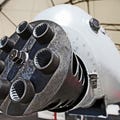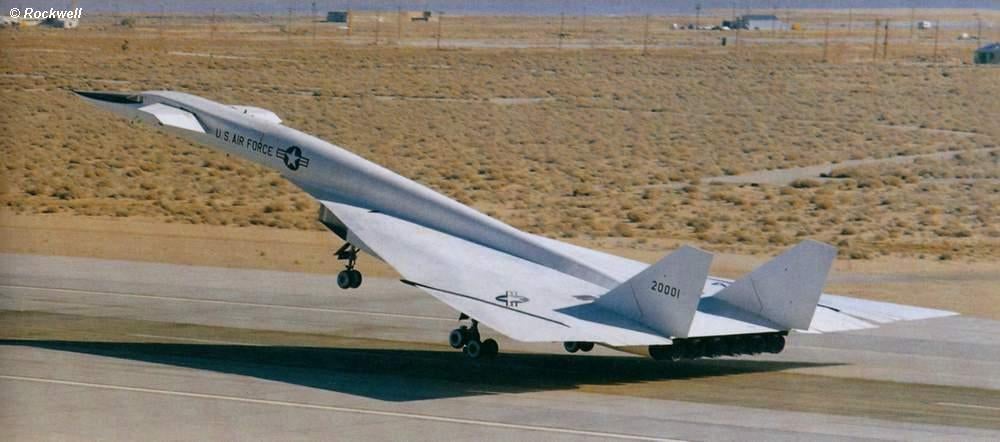New Panoramic Images Show Area 51’s New Mystery Hangar Is Gigantic
EXPAND
Earlier this month, Foxtrot Alpha brought you an exclusive analysis of new satellite images that show the construction of a massive new hangar in a remote part of Area 51 . Now, high resolution panoramic photos have emerged of the base confirming just how monstrous this new hangar truly is.
Shot very recently from Tikaboo Peak, some 26 miles from the base itself, and posted over at Dreamland Resort, these high-resolution panoramas give us a clear view of just how remote and tall this new facility is (look all the way to the left). They also give us a good perspective of the '2007 hangar' and its view-blocking earth berm, as well as almost the entire base.
From these new images, and with consulting a few trusted sources, we estimate that the hangar will be between 70 and 90 feet tall. This figure would make it large enough to accommodate a 747-8i. The height of this structure may also be telling, as a new low-slung flying-wing test article would not need nearly this tall of a hangar to be housed. In fact, America's only known large flying wing, the B-2 Spirit, has traditionally been docked in hangars with low apertures, as the aircraft have no vertical control surfaces.
So why would the USAF build a hangar tall enough to house a jumbo jet? Maybe they are hedging their investment to accommodate presently unknown future projects, or there is something in the works that has a fairly massive, and very much un-stealthy vertical tail.
EXPAND
Our previous analysis identified the most likely tenants of this new remote hangar facility, but if it was purpose built for an aircraft with a tall vertical tail, or the need for a high-lifting overhead crane system, than there is a good chance that some sort of mothership and parasite aircraft could soon inhabit it.
The mothership and parasite aircraft concept is nothing new to Area 51. Project Tagboard of the 1960s saw the development of a modified A-12 Blackbird, called the M21, and its high-supersonic speed capable D21 drone. Although the program was less than a great success, and in some ways outright tragic, in many ways, the M21/D21 pair was greatly ahead of its time, and failed mainly due to the fact that unmanned aircraft technology, satellite data communications and digital flight control systems were far from mature.
EXPAND
In the years that followed the Tagboard project, Area 51 was rumored to hold many other parasite aircraft concepts, from hypersonic spy drone launching motherships to aircraft that could carry reusable spaceplanes capable of putting small satellites into orbit.
One of these rumored projects, known as Blackstar, was a two stage to orbit parasitic concept, that supposedly featured an aircraft very similar to the XB-70 Valkyrie hauling a rocket plane, similar to the X-20 Dyna-soar concept, up to the troposphere, before setting it on its own way into space.
EXPAND
Other rumored concepts and black projects, such as Brilliant Buzzard, Copper Coast, and Science Dawn, were claimed to have been very similar in configuration but were intended to be used for different applications, very high-speed reconnaissance and even deep strike.
Although it is possible that a limited number of these parasitic aircraft were tested during the last four decades, it would seem that the massive expense of building so many motherships and so many different parasite vehicles would be very cost prohibitive. Additionally, other ways of obtaining battlefield imagery, putting objects into orbit and striking deep within enemy territory existed, all without hand-building elaborate 'bleeding edge' super-planes and their associated motherships.
Interestingly enough, the yearning for a two-stage parasitic space plane and a hypersonic deep strike vehicle has seen a large resurgence in the last decade. Time sensitive targeting andprompt global strike have become absolute priorities within the DoD, with multiple technologies being developed in the white and gray world.
Just last week the Army's Advanced Hypersonic Weapon blew up shortly after its test launch in Alaska, and various other hypersonic technologies have been in the spotlight both in the US and in America's growing peer-state military competitor, China.
EXPAND
Meanwhile, the X-37B has been doing nobody knows what, with speculation that includes hauling experimental reconnaissance payloads, deploying mini-enemy satellite attacking 'satlets' and/or proving the USAF's capability to remotely manipulate other satellites. Aside from what we don't know concerning the X-37B, what we do know is that its missions last many months, and all the USAF is telling us is that the program is a wild success.
The X-37B currently relies on an Atlas V rocket to get it into orbit, which is not a cheap, nor a short term endeavor. A small spaceplane like the X-37B that utilizes a mothership for its first stage would allow for a much cheaper, rapid and unpredictable entry into orbit. Such a technology could be absolutely key during a battle with a near-peer state competitor that possesses anti-satellite capabilities.
Even the possibility of an 'SR-72,' that uses a new combined cycle hybrid engine technology, has been highly publicized. This unmanned aircraft is proposed as being a reconnaissance and a strike capable hypersonic war wagon for the USAF, but building a large scale aircraft that has to carry large amounts of fuel to get airborne and to begin its hypersonic run would take years to develop and many billions of dollars. Yet a similar vehicle, but on a much smaller scale, that does not have to takeoff, climb to altitude and achieve supersonic entry speeds could be developed much faster and at a lower cost.
EXPAND
What all this may add up to is a common mothership vehicle that aerospace design houses can use as a template to adapt technologies that are in higher demand and are more technologically achievable now than they were many years ago.
Having a single vehicle that is capable of hauling a hypersonic attack and/or reconnaissance parasite aircraft, or a small spaceplane, would accomplish one half of many of the DoD's 'leading-edge' technology goals, all without having to develop full-fledged 'single stage,' runway-to-runway capable aircraft. This mothership-parasite approach is the backbone of civilian spaceflight, and is also rapidly developing in the commercial sector, so it is only logical that the DoD would bet big on it as well.
EXPAND
The new hangar at Area 51's remote location may be due to the reality that exotic fuels, which require special handling, would probably be necessary not just for a multi-role high-speed mothership, but also for her parasite payloads. Additionally, a high hangar design would allow for a crane system to be installed to lift and install the payload on even a low-slung mothership's upper spine. Finally, it would allow for quick towing or taxing onto the runway for its departure, thus greatly limiting the exposure to prying eyes and satellites, and staying out of direct sight of the main Area 51 apron.
Just like Foxtrot Alpha's first installment on this new mysterious hangar, we can only guess as to what exactly will live inside of it, and there are many possibilities, some of which probably remain unknown. Regardless of this fact, a tall hangar in a remote area of the base is a fairly clear sign that the USAF is working on a very tall order, and that makes this discovery exciting in itself.








No comments:
Post a Comment